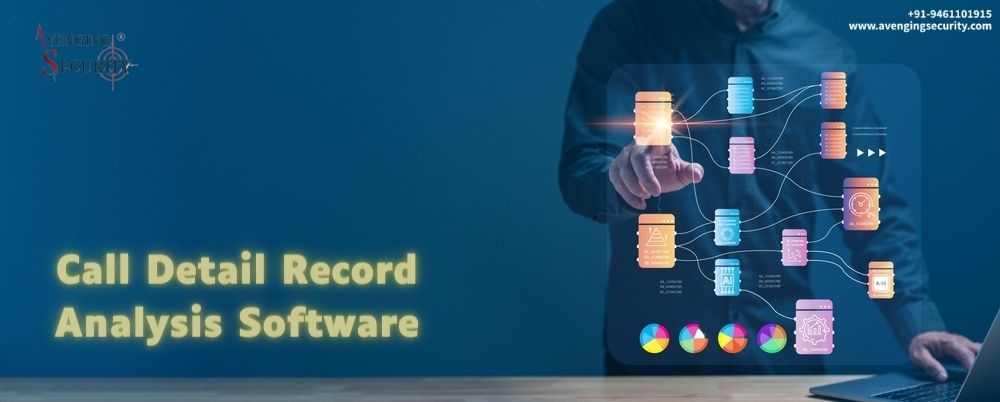In the dynamic landscape of telecommunications, the role of Call Detail Record Analysis Software (CDRAS) has become increasingly vital. As communication networks continue to expand and evolve, the demand for sophisticated tools to analyze and derive insights from call data has surged. In this article, we explore the innovations that are shaping the future of CDRAS and how these advancements are revolutionizing the way we understand and utilize call detail records.
Machine Learning and Artificial Intelligence Integration
One of the most significant advancements in CDRAS is the integration of machine learning (ML) and artificial intelligence (AI) technologies. Traditional methods of analyzing call detail records often relied on predefined rules and patterns. However, with the incorporation of ML and AI, CDRAS can now intelligently adapt to changing communication patterns, identify anomalies, and predict potential issues.
Machine learning algorithms can analyze vast amounts of call data to detect patterns that may go unnoticed by manual analysis. AI-driven CDRAS can provide predictive analytics, helping telecom operators anticipate network congestion, identify potential fraud, and optimize network performance. This evolution marks a paradigm shift in how CDRAS contributes to proactive network management.
Real-time Analytics for Immediate Insights
In the past, analyzing call detail records often involved time-consuming batch processing. However, the future of CDRAS lies in real-time analytics, allowing operators to gain immediate insights into network activities. Real-time analysis not only facilitates quicker decision-making but also enables prompt responses to potential issues, improving overall network efficiency and customer experience.
CDRAS with real-time analytics capabilities can provide instant visibility into call patterns, allowing operators to detect and address issues such as call drops, network congestion, and security breaches in real time. This innovation is particularly crucial in today's fast-paced telecommunications environment, where a delay in identifying and resolving network issues can have significant consequences.
Enhanced Security Measures
As communication networks become more sophisticated, the need for robust security measures within CDRAS is paramount. Innovations in security protocols and encryption techniques ensure the protection of sensitive call data from unauthorized access and cyber threats.
Blockchain technology is emerging as a potential game-changer in securing call detail records. By decentralizing and encrypting data across a network of computers, blockchain enhances the integrity and transparency of call records. This not only prevents unauthorized tampering but also builds trust among stakeholders in the telecommunication ecosystem.
Integration with 5G Networks
The advent of 5G technology has ushered in a new era of connectivity, and CDRAS is evolving to seamlessly integrate with these high-speed networks. The massive increase in data transfer rates and the proliferation of connected devices require CDRAS to adapt to the unique challenges and opportunities presented by 5G.
CDRAS designed for 5G networks can handle the increased volume of data generated by the higher bandwidth and lower latency of 5G connections. Moreover, it can provide granular insights into the performance of 5G networks, enabling operators to optimize resources, troubleshoot issues, and deliver a superior quality of service.
User-Friendly Interfaces and Visualization Tools
In the past, CDRAS tools were often complex and required specialized skills to navigate and interpret data. The future of call detail record analysis software is marked by user-friendly interfaces and advanced visualization tools that make it accessible to a broader audience within telecommunication companies.
Intuitive dashboards, interactive graphs, and customizable reports empower users to extract meaningful insights without the need for extensive technical expertise. This shift towards user-friendly interfaces democratizes the use of CDRAS, allowing different stakeholders, from network engineers to business analysts, to harness the power of call detail records for their specific needs.
Conclusion
The future of Call Detail Record Analysis Software is characterized by a convergence of cutting-edge technologies, including machine learning, real-time analytics, enhanced security measures, 5G integration, and user-friendly interfaces. These innovations are not only transforming the way telecom operators manage their networks but also unlocking new possibilities for optimizing performance, ensuring security, and providing a seamless experience for end-users.
As the telecommunications landscape continues to evolve, CDRAS will play a pivotal role in shaping the industry's future. Embracing these innovations is essential for staying ahead in an era where communication networks are at the forefront of technological progress.


No comments yet